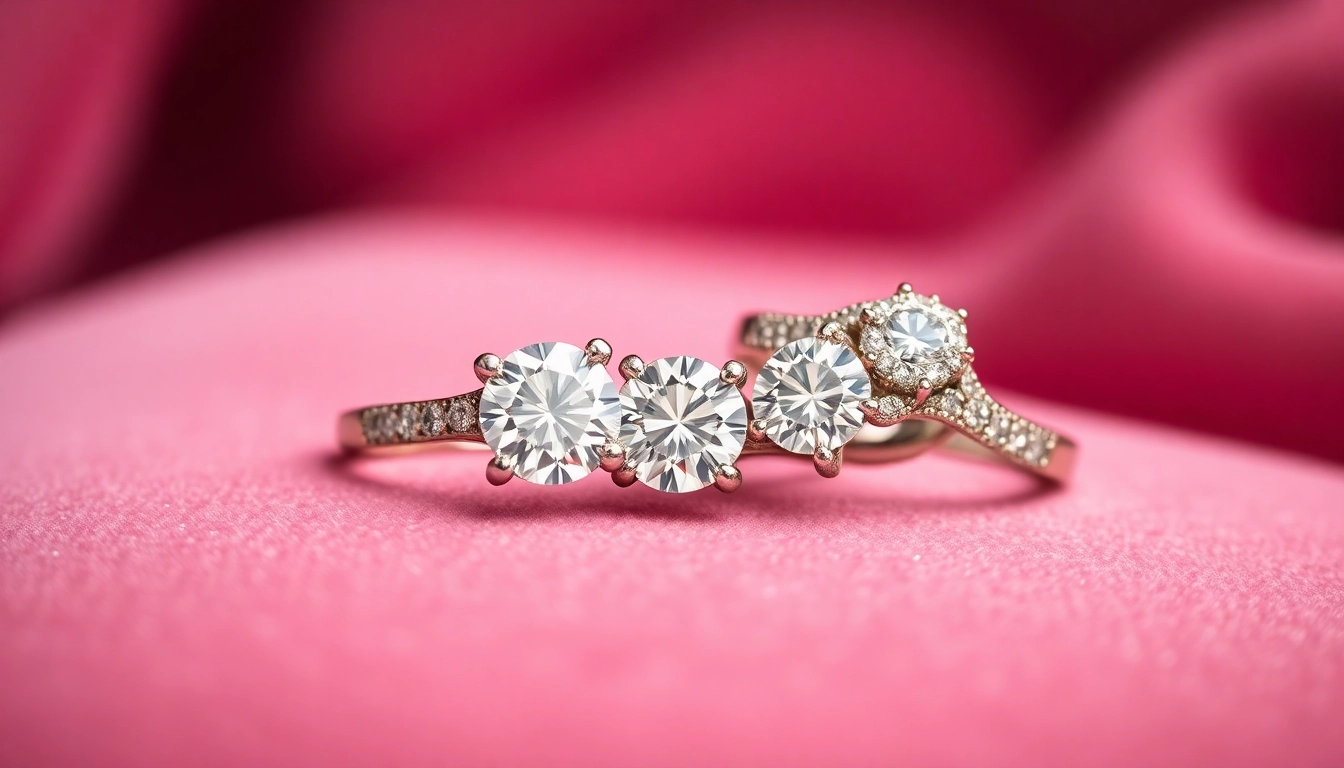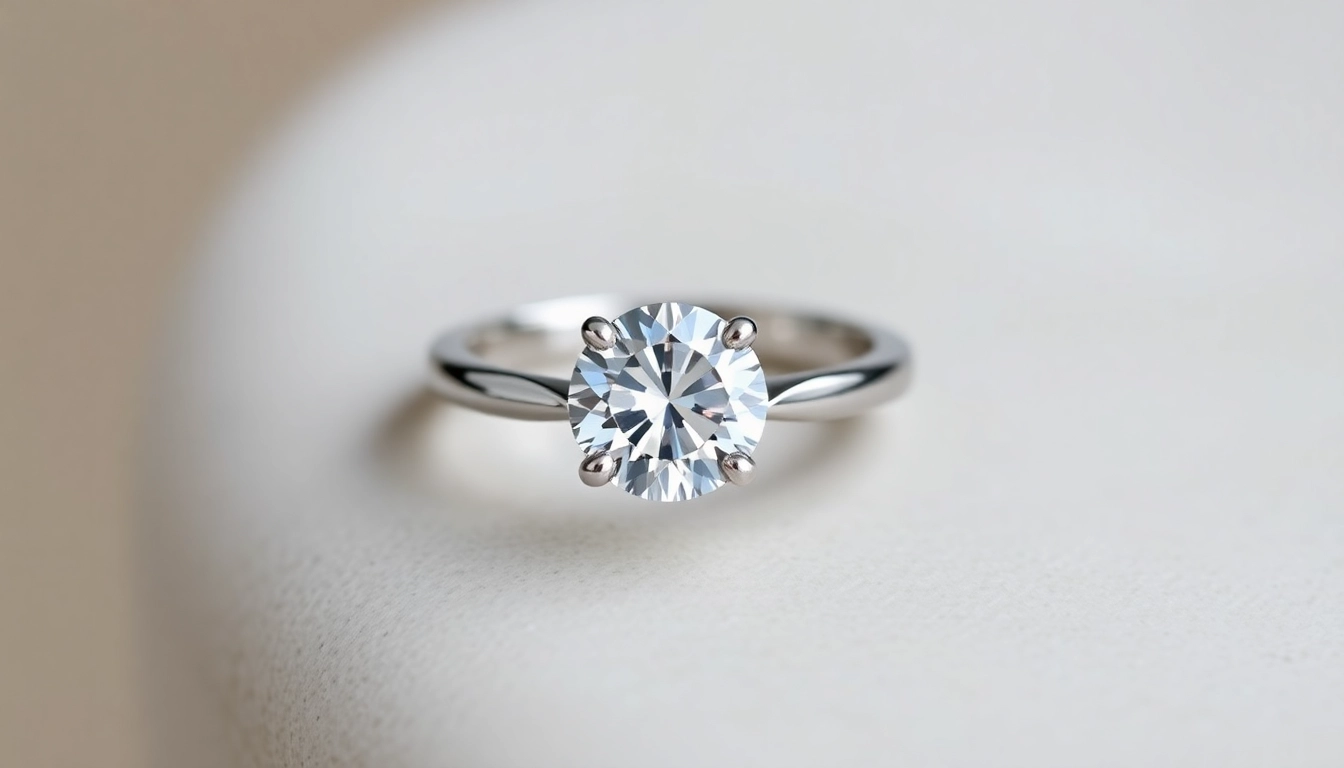Understanding the Significance and Styles of Classic Engagement Rings
In the realm of love and commitment, few symbols hold as much significance as the classic engagement ring. Recognized worldwide for their timeless elegance, these rings symbolize more than just a promise—they embody a story of love, faithfulness, and future togetherness. Historically, the design of classic engagement rings has evolved, blending cultural traditions, technological advances, and artistic expressions to create jewelry that resonates across generations. In this comprehensive guide, we delve into the historical evolution, symbolism, design variations, and practical tips for selecting the perfect classic engagement ring, ensuring your choice is both meaningful and eternal.
Historical Evolution of Classic Engagement Ring Designs
The journey of classic engagement rings traces back centuries, originating from ancient Roman and Egyptian traditions where symbols of eternity and fidelity took form in circles of metal and woven bands. Over time, these simple shapes became adorned with gemstones, with diamonds emerging as the epitome of purity and durability during the Victorian era. The 19th and 20th centuries saw groundbreaking innovations—particularly the introduction of the brilliant-cut diamond and setting techniques that accentuate sparkle and elegance. The iconic Tiffany-style solitaire, featuring a central stone in a prong setting, cemented the classic aesthetic that remains prevalent today. This evolution reflects a continuous desire to combine beauty with profound symbolism, making each ring a personal emblem of a couple’s unique love story.
Popular Materials and Metal Choices for Timeless Appeal
Choosing the right material and metal is fundamental to the durability and visual appeal of a classic engagement ring. Traditionally, platinum and white gold have been favored for their sleek, silver-like appearance and hypoallergenic properties. Platinum, regarded for its strength and natural white sheen, is highly resistant to tarnishing, making it an investment that lasts a lifetime. Gold, available in 14K and 18K purity levels, offers versatile shades such as yellow, white, and rose. Yellow gold symbolizes warmth and tradition, while white gold provides a modern, understated elegance complemented by rhodium plating to enhance its luster. Rose gold, with its subtle pink hue, adds a romantic touch. Each metal type carries its own symbolism and complements different skin tones, allowing buyers to select an option that aligns with their personal style and lifestyle needs.
Symbolism and Meaning Behind Classic Engagement Rings
At the heart of every classic engagement ring lies a rich tapestry of symbolism. The circle shape universally signifies eternity, completeness, and unending love. The central diamond or gemstone amplifies this symbolism, representing strength, purity, and resilience. Historically, diamonds, due to their unparalleled hardness, were designated as symbols of durability and eternal commitment. Beyond material significance, design choices—such as solitaire, halo, or three-stone settings—carry additional meanings. For instance, the solitaire emphasizes the single, unbreakable bond, while the halo enhances the grandeur, symbolizing divine protection. These rings serve as daily reminders of promises made, embodying hopes, dreams, and the enduring spirit of love.
Guidelines for Choosing the Perfect Classic Engagement Ring
Factors to Consider: Style, Budget, and Personal Taste
Selecting an engagement ring requires a mindful approach that balances personal style, financial considerations, and long-term preferences. Assess your partner’s taste—whether classic, minimalist, vintage, or contemporary—by reviewing their jewelry collection or observing their preferred accessories. Budgeting is equally crucial; high-quality diamonds or gemstones can vary significantly in price based on cut, clarity, color, and carat weight. It’s advisable to prioritize what matters most—be it size, brilliance, or a specific cut—and find options that meet that criterion within your financial plan. Consulting with experts or jewelers can clarify options and help you navigate trade-offs, ensuring you invest in a ring that reflects both your love and your fiscal sensibility.
Matching Ring Styles with Your Partner’s Preferences
The ultimate goal is to choose a ring that perfectly aligns with your partner’s personality and style. For those who appreciate timeless elegance, a solitaire ring with a round brilliant-cut diamond in a simple prong setting is ideal. If they prefer a more ornate look, halo settings with additional pavé diamonds elevate the design. Vintage lovers might gravitate towards intricate milgrain detailing or rose gold accents. It’s also essential to consider their daily routine—if they work with their hands frequently, a sturdy setting and durable metal are recommended. When in doubt, discreetly gather hints or consult close friends or family members for subtle insights regarding their preferences, ensuring your choice becomes a cherished symbol tailored to them.
How to Determine the Right Ring Size and Fit
Proper fit is crucial for daily wear and overall comfort. Accurate sizing can be achieved by measuring an existing ring that fits well or using a professional sizing kit. For at-home measurements, wrap a thin strip of paper or a piece of string around the base of the finger, mark the point of overlap, and measure that length with a ruler. Compare the measurement to a standard ring size chart for precision. Many jewelers also offer free resizing services or adjustable designs, allowing flexibility as your partner’s finger size may change over time. Ensuring a perfect fit not only enhances comfort but also prolongs the life of the ring’s setting and gemstone integrity.
Design Elements and Variations in Classic Engagement Rings
Types of Cuts and Settings for a Classic Look
The cut of the gemstone profoundly influences its brilliance and overall aesthetic. The round brilliant cut remains the most popular, characterized by its optimal light reflection and timeless appeal. Other classic cuts include princess, emerald, oval, and marquise, each offering a different visual impact. The setting style accentuates the gemstone’s beauty and secures durability. Prong settings elevate the stone, maximizing brilliance and allowing light to penetrate from multiple angles. Bezel settings create a sleek, protective frame around the gem, ideal for active lifestyles. Halo settings encircle the center stone with smaller diamonds, increasing perceived size and adding sparkle. Understanding these variations helps you craft a ring that matches your aesthetic preferences and symbolizes your unique bond.
Incorporating Additional Gemstones or Custom Details
While tradition favors a single focal gemstone, modern interpretations often include accent stones or personalized engravings, adding individual touches to classic designs. Choices such as side stones—diamonds or colored gems—can enhance symmetry or introduce meaningful symbolism through birthstones or favorite colors. Custom engravings, with dates, initials, or personal messages, add emotional depth to the ring. Incorporating unique motifs or motifs inspired by cultural symbols can transform a standard design into a heartfelt heirloom, aligning with your love story or heritage. Collaborating with a skilled jeweler ensures these custom details blend seamlessly into the overall design, creating a meaningful masterpiece.
Trending Trends in Classic Engagement Ring Designs
Even within the realm of timeless elegance, trends evolve. Current popularities include minimalistic solitaires with sleek, modern settings, vintage-inspired designs with milgrain detailing, and geometric motifs that offer a contemporary twist. Incorporation of colored gemstones—such as sapphires, rubies, or emeralds—in classic settings remains fashionable, symbolizing love’s multifaceted nature. Additionally, sustainable and lab-grown diamonds are gaining traction, appealing to eco-conscious consumers seeking ethical luxury. Technological advancements like 3D printing and custom CAD design allow for precise personalization and intricate detailing, making each ring an exclusive reflection of your vision.
Practical Tips for Buying, Maintaining, and Caring for Your Ring
Where and How to Purchase Authentic Classic Engagement Rings
Authenticity and quality are paramount when investing in a classic engagement ring. Reputable jewelers like Fashion Gold offer certified diamonds and gemstones accompanied by detailed reports on cut, clarity, and origin. Physical stores allow for personalized consultations and immediate fitting assessments. Online platforms, with verified credentials and transparent policies, provide extensive selections and competitive pricing. Always solicit certification from recognized gemological institutes such as GIA or IGI to validate the stone’s quality and origin. Ensuring the retailer adheres to ethical sourcing standards also adds peace of mind, guaranteeing your purchase is both beautiful and responsible.
Professional Cleaning and Maintenance Tips
To preserve the brilliance and integrity of your ring, routine professional cleaning is recommended at least twice a year. Jewelers employ ultrasonic cleaners and steam cleaning techniques that remove dirt and oils without damaging delicate settings or stones. Daily maintenance involves gentle cleaning at home with mild soap and a soft brush, avoiding harsh chemicals that might erode metal or affect gemstone coatings. Regular inspections for loose prongs, scratches, or signs of wear help prevent loss or damage. Keeping your ring stored separately in a soft-lined box minimizes scratches and preserves its luster.
Signs of Quality and How to Ensure Longevity
High-quality classic engagement rings feature precisely cut stones, securely set prongs, and corrosion-resistant metals. Look for symmetrical facets, bright fire, and minimal inclusions in diamonds. A hallmark or purity stamp indicates metal quality, while certification authenticates the gemstone’s caliber. Durability is enhanced by choosing settings that protect vulnerable edges and corners. Periodic professional evaluations and timely repairs extend your ring’s lifespan, making it an everlasting symbol of your love.
Personalizing Your Classic Engagement Ring and Special Features
Adding Engravings and Unique Customizations
Personal touches elevate a classic ring from beautiful to meaningful. Engravings on the inner band might include initials, special dates, or heartfelt messages—adding an intimate layer of sentiment. Custom designs may incorporate motif patterns, milgrain detailing, or side accents that reflect personal or cultural symbolism. Modern technology enables detailed 3D modeling, ensuring your vision is realized with precision. These custom features transform a standard piece into an heirloom that encapsulates your unique story.
Complementing with Wedding Bands and Accessories
Pairing your engagement ring with a wedding band creates a harmonious set that symbolizes unity. Classic wedding bands typically mirror the metal type, such as platinum or gold, and maintain minimalist designs to enhance the solitaire or halo setting. For a cohesive look, consider stacking rings with complementary detailing—e.g., matching engravings, gemstone accents, or shared design motifs. Accessories like pendants or earrings can also be coordinated to reflect the ring’s style, completing your bridal ensemble with elegance and consistency.
Stories of Iconic and Custom-Made Classic Engagement Rings
Many famous personalities have contributed to the legacy of classic engagement rings. Princess Diana’s timeless 12-carat oval sapphire, later worn by Kate Middleton, exemplifies regal elegance and has inspired countless similar designs. Custom-made rings, such as those featuring family heirlooms or bespoke gemstone arrangements, forge deeper emotional value. These stories exemplify how personalized and distinctive settings can turn a beautiful ring into a treasured keepsake, capturing love’s history and promise for generations.

